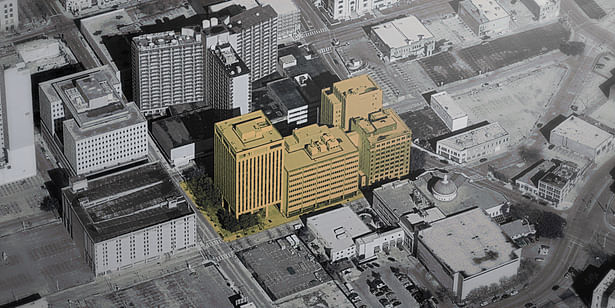
Dallas, TX

Lone Star Gas developer seeks retail for downtown Dallas lofts
Candace Carlisle
Staff Writer - Dallas Business Journal
The search for retail and restaurant tenants is on at the $27 million redevelopment of the Lone Star Gas buildings in downtown Dallas.
It will take two years to complete the project, but Colorado-based Hamilton Properties Corp. — the company redeveloping the four-building, one-block complex — is exploring options for the more than 5,000 square feet ofretail space and 3,200 square feet of restaurant space facing Harwood Street, south of Jackson Street.
“We want to get these spaces back to original condition for a retailer,” said Ted Hamilton, who is developing the property with his father, Larry Hamilton. “We’re going to renovate it and leave it in shell condition for a retail tenant.” Hamilton Properties is part of a growing pool of developers seeking to bring more retail and restaurant options to the city’s central business district.
With roughly 35,000 residents in downtown Dallas and projections for growth, developers will look to add more amenities, such as restaurants and retail for residents, said CEO Larry Hamilton.
“Downtown is the real thing, it’s where younger people want to live,” Hamilton said. “There’s folks my age living in the ‘burbs that have no idea this is happening, but it’s all part of the Seinfeld generation. That generation wants to have urban living.”
The street-level retail space in the 13-story building facing Harwood Street features art deco interiors throughout the lobby, elevator, bill payment area with ornate check stands and teller windows.
The building, which was completed in 1931, could draw a bookstore, or coffee shop to the art deco interior, he said.
Hamilton Properties plans to build a patio off the front of the adjacent building on Harwood Street, which was completed in 1924. Dallas-based Merriman Associates Architects designed the renovations to the buildings that was originally designed by Lang &Witchell. Andres Construction is the general contractor.
John Greenan of Central Dallas Community Development Corp. is co-developing the property, aiding in part with the site’s low-income tax credits.
The project — which will bring 123 apartments to downtown — is being partially funded with $11.75 million in a Federal Housing Administration-insured mortgage, which is being funded through the City of Dallas.
The two spaces are part of the second phase of the property, which will begin after the $16 million first phase is completed: converting a 12-story office tower into 107 apartments.
The first phase — which is halfway completed — includes leasing office, a 1,200-square-foot fitness center, a pool and a movie screening plaza.
Foot traffic
With more residents in downtown Dallas, the area needs more amenities, said Shawn Todd, president of Todd Interests, the developer of the five-story, 100,000-square-foot U.S. Post Office and Courthouse building.
The 78-unit apartment building at 400 N. Ervay, which opened in October, is 50 percent leased.
That demand — and increased foot traffic — has driven Todd to begin marketing a 6,000-square-foot, street-level space for either restaurant or retail use, he said.
“We are focusing on users that would benefit from strong pedestrian traffic, with the residents and an office population a few hundred yards from the building,” Todd said. “The pedestrians need quality food and beverage downtown.”
Other developments that have a retail or restaurant component include the $78 million expansion of The Joule by Dallas-based Headington Oil Co . by Neiman Marcus’ flagship store, which is under construction.
Following density
In the past year, about a dozen restaurants have opened in downtown Dallas, including Dallas Restaurant Group’s Wild Salsa and The Chesterfield, said John Crawford, CEO of Downtown Dallas Inc.
“As critical mass rises, there’s a demand for restaurant and service developments,” Crawford said.
That demand is aided by city incentives that support retail and restaurant development with the city’s Downtown Dallas 360 development plan in specified districts.
But Dallas isn’t alone.
“People are coming back to downtowns across the country,” said Jason Puig, senior vice president at Dallas-based SRS Real Estate Partners . “Instead of developers going out and creating density, they are looking for infill opportunities and the populations are coming back. The retailers and restaurateurs will follow that density.”
Puig is a real estate broker specializing in restaurant space.
With lease rates ranging from $22 to $30 a square foot in downtown, compared to up to $40 a square foot in Uptown — some restaurants will be attracted to the area, he said.
“There are opportunities in Dallas, but it could take a little more time to show the restaurant community,” he said.
No Comments
Block this user
Are you sure you want to block this user and hide all related comments throughout the site?
Archinect
This is your first comment on Archinect. Your comment will be visible once approved.